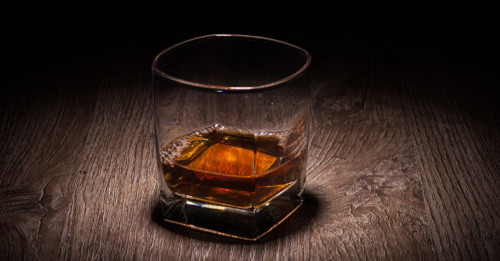Rye Whiskey Essential Info
- Color: Rich amber
- Region: Can legally be produced anywhere in the U.S.
- ABV: Minimum 40% ABV
- Aged: No aging minimum, but often aged in new charred oak; “Straight Rye” aged at least 2 years
- Made from: At least 51% rye
- Commercial Examples: Templeton, Redemption, Bulleit, WhistlePig, Dad’s Hat, Anchor
- Popular Cocktails: Sazerac, Brooklyn, Rye Old Fashioned
Rye might have a distinct flavor profile—since rye itself is a pretty distinctive grain, able to stand out against even the aggressive hoppiness of an IPA beer—but it’s actually made in a similar fashion to bourbon. Whereas bourbon’s 51% corn, rye’s 51%, well, rye, the rest being filled out by anything from corn to malted barley to wheat, etc. Like bourbon, a typical rye mash will have some “sour mash” from the previous production cycle added back to it—ensuring a consistency of yeast and flavor (not tanginess, though). And like bourbon, rye is aged in charred new oak barrels, which is where it gets its color and even more spice. Also like bourbon, rye is distilled to no more than 160 proof (meaning it’s stripped of fewer congeners, or flavor compounds), and it’s bottled at minimum 40% ABV.
But rye, of course, is not bourbon—and lovers of whiskey variety rejoice—again, owing to the distinct, assertive flavor of rye, which even after mellowing in charred oak can kick around in your palate with a lively spiciness. Rye will also have notes of caramel and vanilla from the barrels, and, depending on how it’s aged or blended, might showcase a variety of other flavors. Rye doesn’t have specific aging minimums, but as with any whiskey, it benefits from some carefully regulated aging. “Straight Rye,” like “Straight Bourbon,” is aged at least 2 years (like Straight Bourbon, if it’s aged under 4 years, Straight Rye has to have an age statement on the label).
While rye has historically been made with up to 100% rye (known as the Monongahela style), today most rye is made with a far more modest, but still hefty, rye content, which finishes dryer—balanced out by a large proportion of corn (39%). With the craft distilling boom, of course, old school, high rye styles are being revived—though, as can happen with distilled spirits, the distilling itself is sometimes done at a larger facility (Midwest Grain Products, who make a 95% rye) and sold to various smaller producers, e.g. Templeton, Bulleit, etc.
To avoid confusion, and rye-intensity, beginner rye drinkers would do best to start middle of the road before (if ever) going full-rye.
